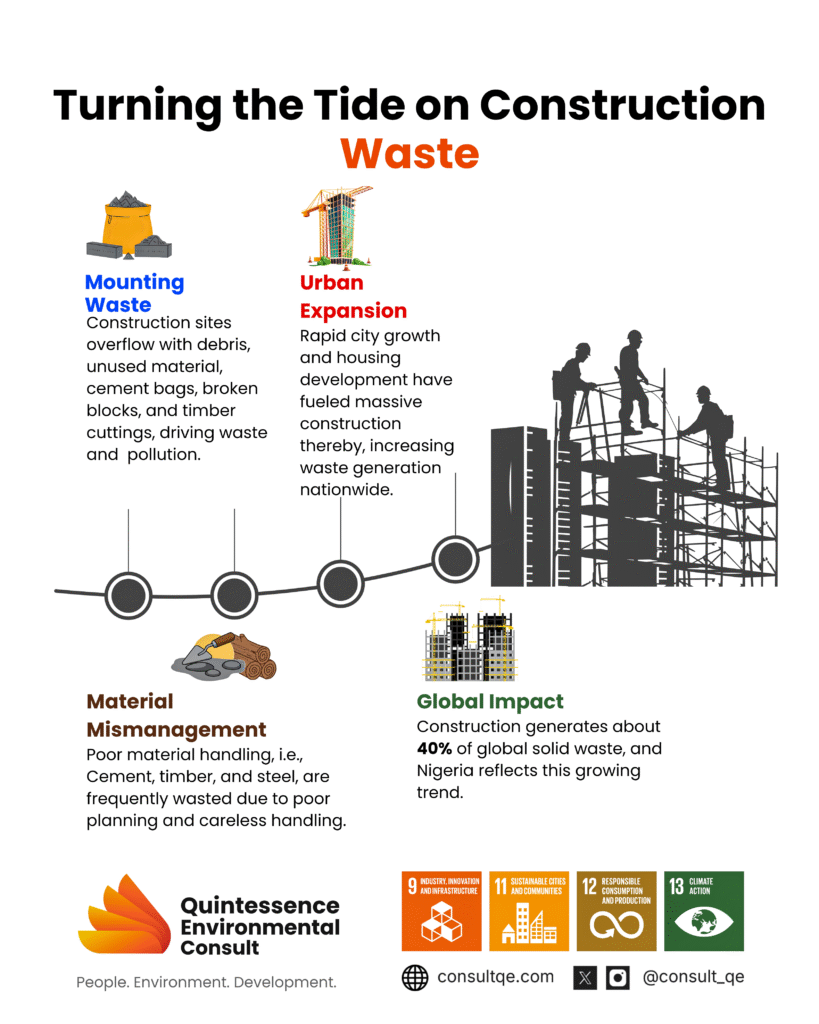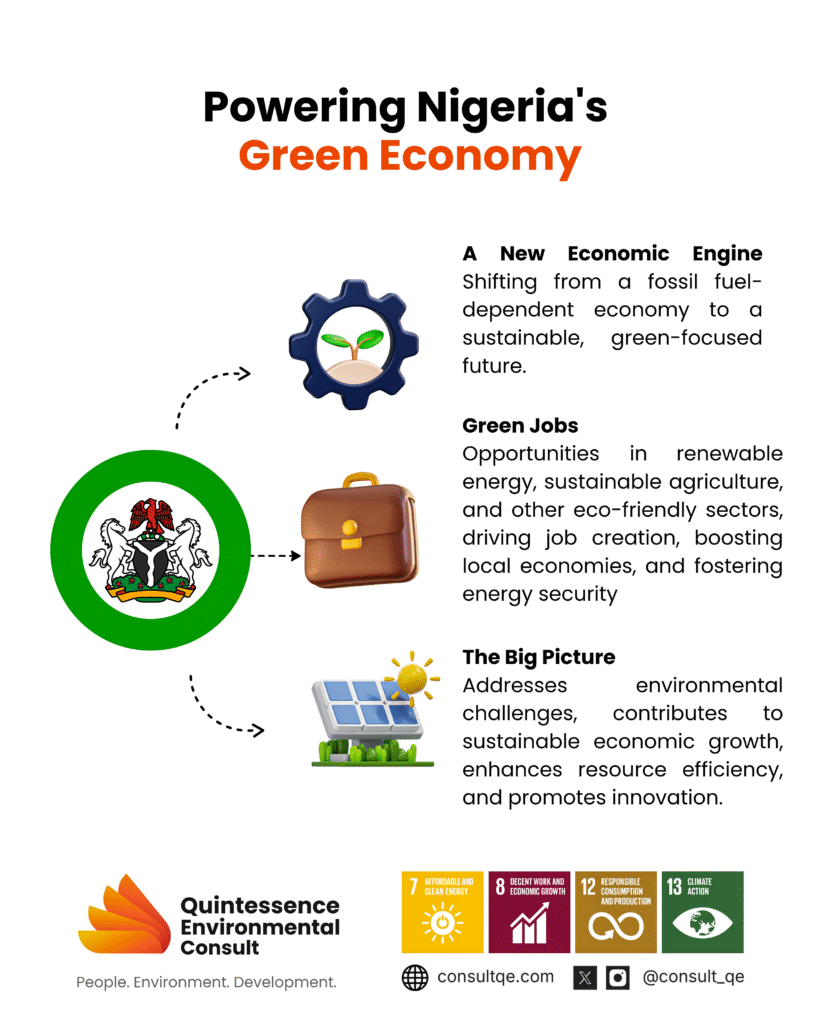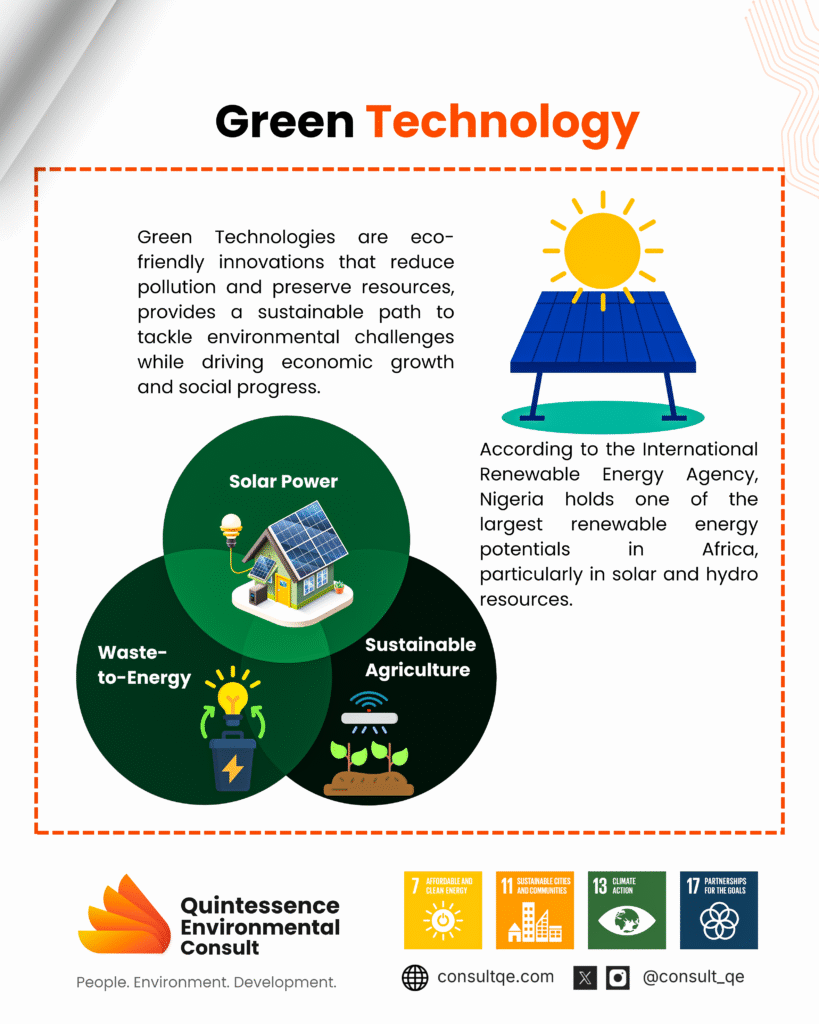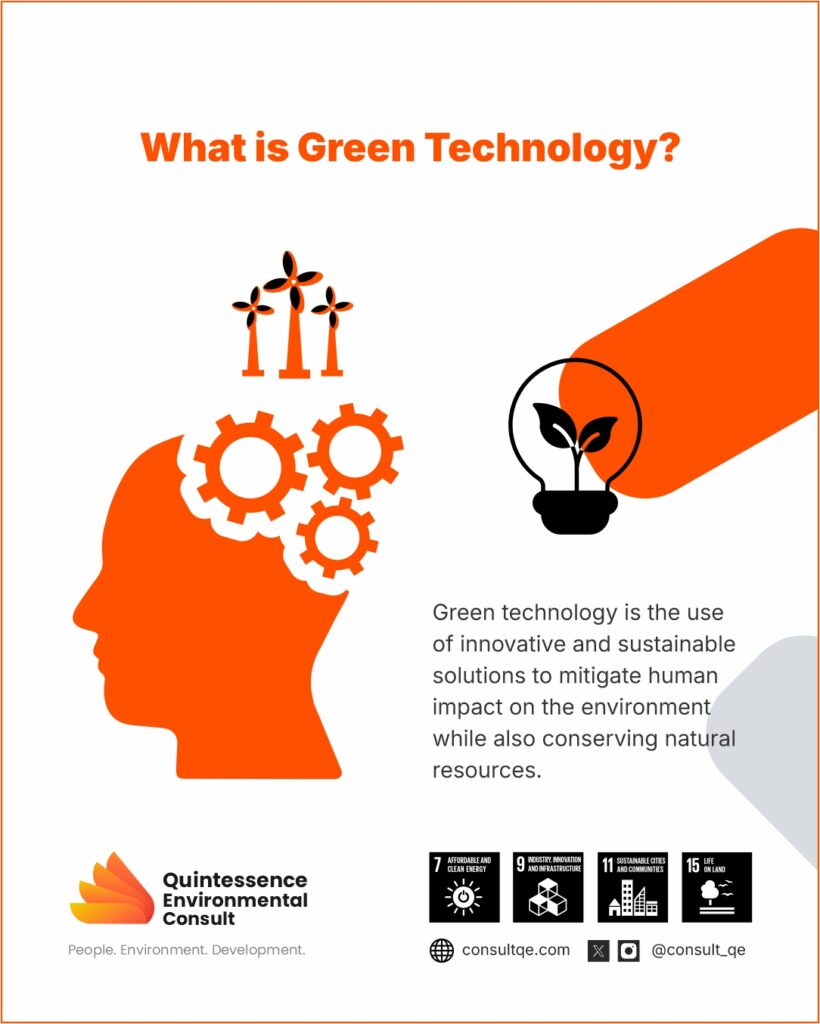Decarbonizing The Nigerian Built Environment Through Engineered Local Materials

INTRODUCTION
The necessity for a shift in the Nigerian construction industry is driven by dual and intersecting crises: the enormous national housing deficit and the growing environmental urgency for sustainability. Rapid urbanization has pushed formal housing costs to extremes, effectively pricing millions of citizens out of the market (11). This crisis is exacerbated by the sector’s persistent reliance on imported, carbon-driven models such as steel & cement production, which are detrimental to low-cost housing goals and increase the nation’s carbon footprint (27). Integrating low-carbon, culturally resonant materials is therefore vital for achieving economic stability, social inclusion, and ecological sustainability
Building Smarter, Wasting Less: The Future of Sustainable Construction in Nigeria

INTRODUCTION
Imagine a building site where piles of cement bags, broken blocks, and timber cuttings grow higher than the house being built. This is the reality of many construction sites in Nigeria today. The waste generated not only drives up project costs but also pollutes the environment, worsening the housing crisis and undermining sustainable development. Nigeria is one of the fastest-urbanizing countries in Africa. According to the United Nations, more than half of Nigerians now live in cities, and by 2050, the urban population is expected to double (United Nations, 2019). This urban expansion has fueled a construction boom, with roads, housing estates, and commercial buildings springing up in almost every state. While this growth supports economic development, it has created a hidden challenge: the massive generation of construction waste.
Cement is Nigeria’s most commonly used building material, with annual consumption exceeding 20 million metric tons (Nigerian Bureau of Statistics, 2020). Yet at construction sites, it is common to see cement wasted during mixing, hardened leftovers dumped after setting, and bags spoiled by moisture before use. Timber, another widely used material, is often cut to sizes that leave large offcuts, while broken blocks and bent reinforcement rods are discarded without reuse.
This careless material culture contributes to high construction costs and environmental degradation.
Globally, the construction industry accounts for about 40% of solid waste generation (United Nations Environment Programme [UNEP], 2021). Though Nigeria lacks comprehensive national data, anecdotal evidence suggests construction waste is one of the largest contributors to solid waste in cities like Lagos and Abuja. Unless addressed, this problem will worsen as demand for housing and infrastructure grows.
The Economic Power of Green Jobs in Nigeria

For decades, Nigeria’s economic narrative has been heavily reliant on the unstable nature of the oil market, as seen in the 2016 recession. (1) This dependency hinders the country’s capacity to develop other critical sectors, such as agriculture, manufacturing, and renewable energy. However, as the world shifts towards a sustainable future, transitioning to a green economy serves as an innovative pathway to enhancing the Nigerian economy. The transition to a green economy, a model that is low-carbon, resource-efficient, and socially inclusive, is not just about environmental protection; it is a strategic pathway to creating a new generation of employment opportunities known as green jobs.
Embracing Green Technology in Nigeria: Innovations and Ongoing Projects Driving Sustainable Development

KEY TAKEAWAYS Green technology is essential for Nigeria’s sustainable future, helping address energy poverty, environmental degradation, and waste mismanagement while promoting economic resilience. Projects like the Nigeria Electrification Project and Solar Nigeria Program are expanding access to renewable energy in off-grid areas, particularly through solar-powered mini-grids and home systems. Innovative waste management initiatives, such as WeCyclers and waste-to-energy facilities, are transforming how urban communities handle solid waste while generating value and reducing pollution. Sustainable agriculture and electric mobility are emerging priorities, with solar-powered irrigation systems supporting rural farmers and electric vehicles offering cleaner alternatives in urban transport. Collaboration, investment, and strong governance are critical to scaling green technologies and ensuring their long-term impact in line with the United Nations Sustainable Development Goals (SDGs). INTRODUCTION Can a nation rich in oil become a leader in clean, sustainable energy? This question challenges the conventional view of Nigeria, a country long dependent on fossil fuels, as it begins to chart a new course toward environmental sustainability through green technology. With energy deficits, climate change, and environmental degradation, Nigeria is increasingly turning to innovative, eco-friendly solutions. From solar-powered communities to sustainable farming practices, the nation’s embrace of green technology is not just a trend but a transformative movement to drive long-term development and resilience. Nigeria, as Africa’s most populous country and largest economy, faces a range of environmental and developmental challenges, including erratic power supply, rapid urbanization, deforestation, and high greenhouse gas emissions. Historically reliant on fossil fuels for energy and economic growth, the country is now under pressure to transition toward cleaner, more sustainable practices. Green technology, defined as environmentally friendly innovations that minimize pollution and conserve natural resources, offers a viable pathway to address these issues while promoting economic and social development. The importance of adopting green technology in Nigeria cannot be overstated. According to the International Renewable Energy Agency, 9 Nigeria holds one of the largest renewable energy potentials in Africa, particularly in solar and hydro resources. Yet, access to clean energy remains limited, especially in rural areas. Furthermore, the World Bank notes that Nigeria generates over 32 million tonnes of waste annually, much of which goes unmanaged.24 Integrating green technology into sectors like energy, agriculture, waste management, and construction is essential not only for mitigating environmental degradation but also for achieving the United Nations Sustainable Development Goals (SDGs) and ensuring long-term national resilience. INNOVATIONS AND ONGOING PROJECTS DRIVING NIGERIA’S GREEN TRANSITION Renewable Energy Solutions One of the most significant strides in green technology is Nigeria’s increasing investment in renewable energy, particularly solar power. The Nigeria Electrification Project (NEP), supported by the World Bank and implemented by the Rural Electrification Agency (REA), aims to connect over 2.5 million people in off-grid areas through solar mini-grids and solar home systems. 25 The Solar Power Naija Initiative by the Rural Electrification Agency (REA) aims to provide 5 million new connections to 25 million individuals in off-grid communities, highlighting a focus on energy access for those most in need.3 In the Northern region, initiatives like the Solar Nigeria Program have equipped schools and clinics with solar panels, improving both education and healthcare delivery. These efforts not only reduce dependence on diesel generators but also lower carbon emissions, providing sustainable energy alternatives to underserved populations. In the commercial and industrial sector, the Wood Factory Hybrid Solar Project in Abuja, featuring a 600 kw rooftop solar PV system with battery storage, represents a pioneering model for Commercial and Industrial customers, aiming for a significant 44% reduction in energy costs and a guaranteed 95% uptime through a DisCo-enabled project.11 The table below shows some key renewable energy projects in Nigeria, their capacity, location and status.3, 18, 19, 22 Project Name Technology Type Capacity (MW) Location Status Argungu Solar PV Park Solar PV 5600 Kebbi Announced Jigawa Solar PV Park Solar PV 1000 Jigawa Announced Gezhouba Lagos Solar PV Park Solar PV 360 Lagos Permitting Lafia Solar PV Park Solar PV 350 Nasarawa Permitting Gombe Solar PV Park Solar PV 270 Gombe Permitting Kano Solar Project Solar PV 10 Kano Commissioned Katsina Wind Farm Wind 10 Katsina Operational (with delays) Gurara II Wind Farm Wind 50 Niger Proposed Mambilla Hydroelectric Power Station Hydropower 3050 Taraba Proposed Zungeru Hydropower Project Hydropower 700 Niger Commissioned Kainji and Jebba Hydropower Plants Hydropower 1338.4 Niger Operational Waste Management and Recycling Innovations Nigeria generates over 32 million tonnes of solid waste annually, yet less than 20% is properly managed. 24 Green start-ups like WeCyclers in Lagos have introduced innovative waste collection and recycling systems using low-cost cargo bicycles to serve urban slums. Their model rewards households with points that can be exchanged for essential goods, thereby incentivizing recycling behaviour while tackling urban pollution. In Abuja, a pilot project has introduced locally fabricated Reverse Vending Machines (RVMs) in some key locations 12 like The Central Park and National Assembly Complex This initiative, a collaboration between United Nations Industrial Development Organization (UNIDO) and the Abuja Environmental Protection Board (AEPB), aims to automate the collection of plastic waste, boost recycling rates, and support Nigeria’s transition to a circular economy. Citizens can deposit waste plastic bottles and aluminum cans into the RVMs in exchange for incentives, encouraging public participation in recycling efforts. The digitally collected data from this project will also inform future waste management strategies. Waste-to-energy (WtE) projects are gaining momentum as a dual solution for waste management and energy generation. The Lagos State Government has partnered with Harvest Waste Consortium, a Dutch-owned company, to build a high-efficiency waste-to-energy plant at the Epe landfill. 17 This plant will process 2,250 tonnes of waste daily and is expected to generate 60-75 MW of electricity annually, enough to power approximately 40,000 homes. The project also aims to significantly reduce CO2 emissions and divert a large percentage of waste from landfills. Another notable example is the organic waste power plant at the University of Nigeria, Nsukka. 13 This 100 kVA refuse-derived fuel gasification plant utilizes organic waste generated on campus to produce electricity, demonstrating the potential for decentralized
Sustainable Development Through Green Technology Innovation In Nigeria

KEY TAKEAWAYS: Green technology innovation is crucial for sustainable development in Nigeria, with potential impacts on the environment, social well-being, and economic growth. Some progress has been recorded in the renewable energy sector and agriculture through the work being done at the Rural Electrification Agency (REA), the National Agency for Science and Engineering Infrastructure (NASENI) and the Centre for Dryland Agriculture (CDA) to mention a few. Beyond solar and agroforestry, waste management and green building remain underexplored sectors. Leveraging these could address Nigeria’s pollution crises while creating jobs and improving urban resilience. Key barriers to implementing green technology in Nigeria include limited government policies fostering innovation, limited green financing, and a gap between the innovation space and the real sector. Green financing is a key factor in promoting green technology innovation, including financial instruments such as green bonds, green banks, and carbon market instruments. INTRODUCTION Population growth and expanding industrial activities have driven a significant rise in natural resource consumption and electricity demand. The extraction of these resources and the use of fossil fuels to generate electricity lead to environmental issues such as deforestation, biodiversity loss, pollution, resource depletion, and global warming. Hence, there is a need to plan, organize, and control human activities to manage our resources for our efficient use and the use of future generations. Sustainable development encompasses social, environmental, and economic aspects. One of the many strategies that can achieve all aspects is the implementation of green technology. In Nigeria, The Energy Commission of Nigeria (ECN), is responsible for strategic planning and coordination of national policies in the energy sector. ECN has developed the Renewable Energy Masterplan (REMP) to promote an increase in the supply of renewable electricity from 13% of total electricity generation in 2015 to 23% in 2025 and 36% by 2030 [4]. Also, the Centre for Dryland Agriculture (CDA) is promoting sustainable agricultural practices through training, outreach programs, and research in areas such as molecular biology, plant tissue culture, geographic information system (GIS) & remote sensing, soil & plant analysis, and food analyses. [1] WHAT IS GREEN TECHNOLOGY? Green technology is the use of innovative and sustainable solutions to mitigate human impact on the environment while also conserving natural resources. It has gained global adoption across diverse sectors such as agriculture, renewable energy, waste management, water treatment, sustainable construction (green building), and pollution control. Advantages of Green Technology on the Scope of Sustainable Development Environmental Impact: Green technologies mitigate environmental issues, such as pollution, biodiversity loss, and resource depletion. Renewable energy, for example, displaces fossil fuel dependency, which minimizes hydrocarbon contamination of aquifer systems and particulate emissions. Circular economy practices, such as material recycling and upcycling, reduce waste generation and extend product lifecycles. Social Impact: Green technologies provide social amenities, such as healthcare, education, and accessible clean water. Solar-powered water purification systems in remote areas provide portable water and eradicate waterborne diseases. Sustainable agro-techniques (e.g., integrated pest management, precision agriculture) minimize agrochemical runoff, preserving soil health and bolstering food security through resilient crop yields. Economic Impact: Green technology drives cost-efficient innovation and labour market expansion. Waste recycling industries reduce raw material procurement costs while generating employment across the collection, sorting, and processing sectors. Renewable energy infrastructure development stimulates high-skilled job creation in engineering, manufacturing, and maintenance, fostering inclusive economic growth. Green technology has the potential to make significant contributions to achieving sustainable development by addressing environmental issues, improving social well-being, and fostering economic growth. [9] GLOBAL INITIATIVES OF GREEN TECHNOLOGY Denmark implemented green technology through wind power renewable energy source. Thus, becoming the country with the highest share of wind power in the world by generating 47% of its electricity from wind power in 2019 [6] and with a target of reaching 60% by 2030 [5]. This has enabled the country’s greenhouse gas emissions (GHG) to be reduced to 41.7% in 2020 from its initial 71.1% in 1990. [3]India, a developing country, has also implemented green technology as a tool for its Railways. Indian Railways is the national railroad carrier that transports more than 16 million passengers and 1.5 million tonnes of freight daily, with 1.34 million employees. It consumes almost 2% of India’s total electricity consumption. Employees of Indian Railways reside in housing colonies that utilize energy-inefficient incandescent lamps (ICLs) for their lighting needs, thus increasing peak electricity demand in the evening. Hence, a multidisciplinary project team was given the task of looking for solutions that would reduce peak electricity demand in housing colonies through the adoption of green technology by its employees. The biggest challenge for the project team was to figure out the financing mechanism, to kick-start the project. Various options that were put forth during brainstorming sessions include; subsidy by the government, initial free supply of the product but with monthly installment payback, subsidy reduction for electrical consumption (to make the green technology more attractive), subsidy for manufacturers (to reduce the cost of producing green technologyproducts) But they were rejected by the government. The project team found a workable solution and successfully implemented it to provide green lighting solutions in approximately 400,000 households of Indian Railways. The Indian government launched schemes like the UJALA (Unnat Jyoti by Affordable LEDs) scheme to promote the replacement of ICLs with energy-efficient LED bulbs. This project resulted in a significant reduction of peak lighting load without compromising on the lumen output and, thus, contributed towards sustainable development. [10] Some case studies of ongoing green technology projects include; Singapore’s Green Building Initiative – It is part of the Singapore Green Plan 2030, the nation’s collective effort to advance the agenda on sustainable development. It aims to deliver these three key targets of “80-80-80 in 2030” greening 80% of Singapore’s buildings, 80% of new developments to be super low energy, 80% improvement in energy efficiency. [13] In the case of Uganda, a developing country, joining the Sustainable Energy for All (SE4All) initiative with its goals being; More than 98% of the population has electricity access from mainly solar PV but also from hydropower., geothermal,
